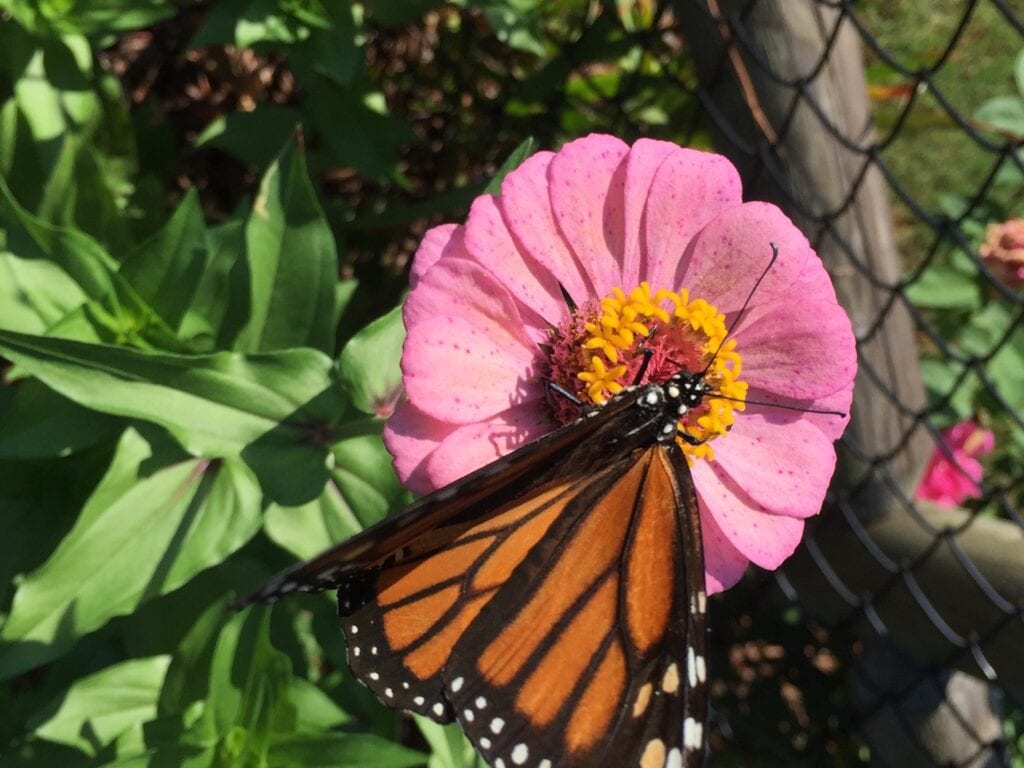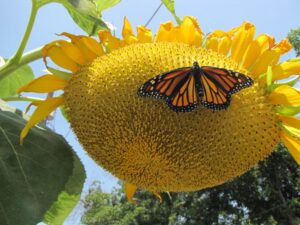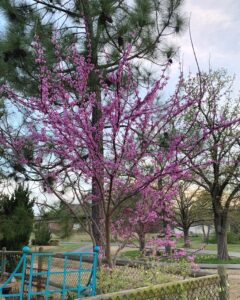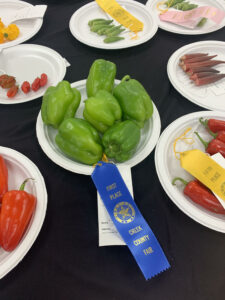Beautiful, blooming plants attract various pollinators in our area. Bright, colorful flowers are sure to attract a number of many Oklahoma butterflies. Some butterfly species migrate through our area but others actually overwinter in a chrysalis, ready to be awakened as our temperatures rise. The Monarch has become one of the most popular butterflies, due to efforts to increase their dwindling numbers. Their bright and beautiful coloring of orange and black make them easy to spot. As millions migrate to central Mexico each year, we are treated to sightings of this amazing creature.
To increase the Monarch numbers, nationwide efforts have been made to plant more Milkweed. But why does the Monarch need Milkweed? It’s because milkweed is a host plant for Monarch eggs. In fact, milkweed is the only plant that the female monarch will lay eggs on, and the only plant the Monarch larva will eat. As the eggs hatch on the milkweed and the caterpillars appear, their food source is readily available. The caterpillar eats voraciously on the milkweed plant, growing to many times their size, before beginning their metamorphosis into a chrysalis that produces the adult butterfly.

What is needed to attract butterflies to your garden? First, plants must be available as a source of nectar. The nectar provides a high energy sugar and supplies needed calories. As butterflies fly from flower to flower in search of nectar, the yellow pollen is distributed to assist in the process of pollination. When planning a garden, include many single stem, bright, colorful flowers that will provide easy access to food for the butterfly. A favorite in my garden is the red zinnia. These bright flowers can be easily grown from seed or purchased ready to plant. As the season progresses, the butterflies absolutely flock to grab their nectar! Take care in selecting the correct Zinnia though. New hybrid varieties are bred to have larger, more colorful blooms. While pleasing to the eye, these flowers greatly reduce access to the stamen (interior part of the plant that provides the pollen). Make sure your flowers have a large open center that provides easy access for pollinators. Other easily-grown nectar flowers include marigolds, cosmos, black-eyed Susan, purple coneflower, goldenrod, aster and butterfly bush.
Along with the nectar plants, it is important to provide butterfly host plants. Each butterfly species has specific host plants that will provide food for the emerging larva. Host plants include herbs, flowers, bushes, vines and trees, depending on the species. For example, our beautiful Oklahoma state butterfly, the Black Swallowtail, will only lay its eggs on plants such as parsley, dill, bronze fennel, rue and Queen Anne’s lace. Plant plenty of these plants, though, if you want some for yourself! Once the caterpillars hatch, their voracious appetites increase daily, even to the point of stripping a plant!
With a little knowledge of host and nectar plants, you will soon be on your way to a butterfly garden. More info can be found at https://www.thebutterflysite.com/create-butterfly-garden.shtml or email kberryhill10@gmail.com for a list specific to Oklahoma.










